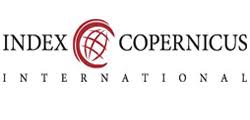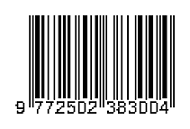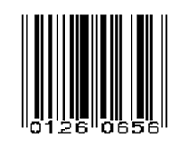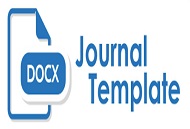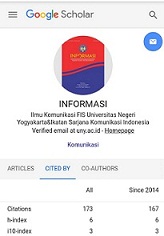Interplay health communication in new media in healthy living attitudes in Indonesia
DOI:
https://doi.org/10.21831/informasi.v53i1.58894Keywords:
Health Communication, New Media, Healthy Living AttitudesAbstract
Health communication has become important after two years of the world experiencing Covid 19. The quality of healthy life in the community is important. New media make good information about maintaining health. However, because of the long period of being in normal healthy conditions, many new media accounts provide incorrect health information. The research question is how effective is health communication in the content of its messages in the new media about health in the post-pandemic period against the healthy living attitudes of its followers? The purpose of the study was to find out health communication in the content of its messages in new media about health in the post-pandemic period towards the healthy living attitudes of its followers. The concepts of health communication, healthy living attitudes, and previous research support this research. Health communication has the dimensions of interpersonal communication and mass communication. A healthy life attitude has cognitive, affective, and conative dimensions. This research method uses quantitative by distributing questionnaires to respondents. The validity and reliability of the measuring instrument is valid and reliable so that it can be continued to the next statistical analysis. The results of descriptive research are of good value to all dimensions, both health communication variables and attitude variables. The analysis of the next two variables is that both have strong effectiveness. The interplay of both variables is considered strong according to the applicable standards according to some literature. This means that the effect of health communication in new media is effective in influencing the life attitudes of the Indonesian people. So the alternative hypothesis of this study is accepted, and the null hypothesis is rejected. The results of this study are related to previous studies. So that it can be utilized by subsequent research and health communication academics. Research suggestions can be developed from other theoretical perspectives and use other methods to enrich the development of health communication studies.
References
Cornejo, M., Ayon, C., & Enriquez, L. E. (2022). A Latent Profile Analysis of U.S. Undocumented College Students' Advocacy Communication Strategies and Its Relationship With Health. Journal of Applied Communication Research, 45(2).
Huo, J., Desai, R., Hong, Y. R., Turner, K., Mainous, A. G., & Bian, J. (2019). Use of Social Media in Health Communication: Findings From the Health Information National Trends Survey 2013, 2014, and 2017. Cancer Control, 26(1). https://doi.org/10.1177/1073274819841442
Indonesia Window. (2021, February). Indonesia Ranks 11th in Asia Pacific in Personal Healthcare Index. Indonesia Window: Huamaniora.
Indrawati, E. (2015). Health Communication for the Prevention of Leptospirosis Disease in the Community of Sumberagung Village, Moyudan District, Sleman, Yogyakarta.
Irawan, D. A. (2022). AN OVERVIEW OF THE ANALYSIS OF HEALTH DEVELOPMENT IN INDONESIA DURING THE COVID-19 PANDEMIC. Tambusai Journal of Health, 3(3), 369–373.
Ishikawa, H., & Kiuchi, T. (2010). Health literacy and health communication. In BioPsychoSocial Medicine (Vol. 4). https://doi.org/10.1186/1751-0759-4-18
Negoro, S. H., Key, K., Persuasive, K., Health, K., Danger, P., & Figure, B. (2016). PICTORICAL WARNING ON CIGARETTE PACKS: PERSUASIVE COMMUNICATION IN HEALTH CAMPAIGNS.
O'Keefe, D. J. (2021). Persuasive Message Pretesting Using Non-Behavioral Outcomes: Differences in Attitudinal and Intention Effects as Diagnostic of Differences in Behavioral Effects. Journal of Communication, 71(4), 623–645. https://doi.org/10.1093/joc/jqab017
Riyanto, S. J., & Farida, N. (2022). Social Network Analysis of Twitter User Health Communication With Hashtags #vaksinuntukkita In The Covid-19 Era (Shafira Julia Riyanto 1 , Nuke Farida 2 ) Social Network Analysis Of Twitter User Health Communication With Hashtags #vaksinuntukkita In The Covid-19 Era. AGUNA: Journal of Communication Sciences, 3(1), 47–55. http://ejournal.amikompurwokerto.ac.id/index.php/AGUNA
Shepherd, J. (2023, January 23). 22 Essential Twitter Statistics You Need to Know in 2023. Social Shepherd.
Stecula, D. A., Motta, M., Kuru, O., & Jamieson, K. H. (2022). The Great and Powerful Dr. Oz? Alternative Health Media Consumption and Vaccine Views in the United States. Journal of Communication, 72(3), 374–400. https://doi.org/10.1093/joc/jqac011
Widi, S. (2022, November 22). Almost 70% of Indonesia's Population Has Health Insurance in 2022. Indonesia Data 2022.
World Health Organization. (2022). Global Health Observatory: Indonesia 2022.
Downloads
Published
Issue
Section
License
Authors who publish with this journal agree to the following terms:- Authors retain copyright and grant the journal right of first publication with the work simultaneously licensed under a Creative Commons Attribution License that allows others to share the work with an acknowledgement of the work's authorship and initial publication in this journal.
- Authors are able to enter into separate, additional contractual arrangements for the non-exclusive distribution of the journal's published version of the work (e.g., post it to an institutional repository or publish it in a book), with an acknowledgement of its initial publication in this journal.
- Authors are permitted and encouraged to post their work online (e.g., in institutional repositories or on their website) prior to and during the submission process, as it can lead to productive exchanges, as well as earlier and greater citation of published work (See The Effect of Open Access).

